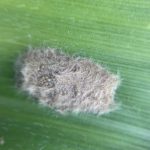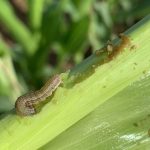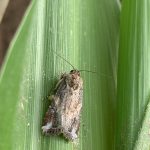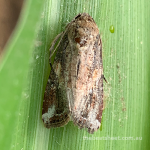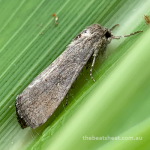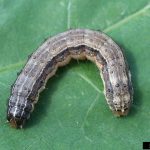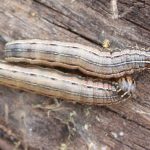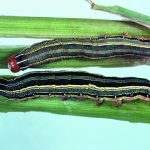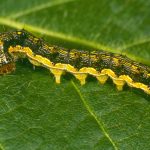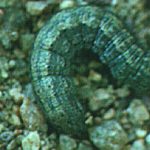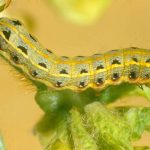Originating in the tropical and subtropical regions of the Americas, FAW is now found in Africa, the Indian subcontinent, China and South East Asia. This migratory pest has the capacity to spread widely in some seasons but is likely to only survive year-round in warmer climates.
FAW has been reported from a large number of plant species, but in Australia, significant crop losses so far have been to maize and sweet corn, and sorghum. To March 2022, FAW has been recorded (but not necessarily causing crop loss) in capsicum, sugarcane, millet, oats, Heliconium sp, strawberries, avocado, ginger, mungbean, soybean, green beans, wombok, celery, and Rhodes grass. No records of infestations have been recorded from cotton.
- Egg mass
- Larva
- Adult moth
Many leaf-eating caterpillars share similar visual characteristics and damage symptoms. FAW larvae can vary widely in appearance, and are at their most distinctive in later instar stages; distinguishing younger larvae can be difficult.
Collecting a sample of young larvae and leaves, and rearing them to later instars may help confirm FAW presence if initial identification efforts are inconclusive.
FAW lifestages
The pale yellow eggs are laid in ‘furry’ clusters of 100-200. Individual eggs are less than 0.5mm in diameter, and turn from pale to brown as the larva develops inside. Scales covering the mass may give it a silvery or grey ‘furry’ appearance, although some egg masses are laid without scales.
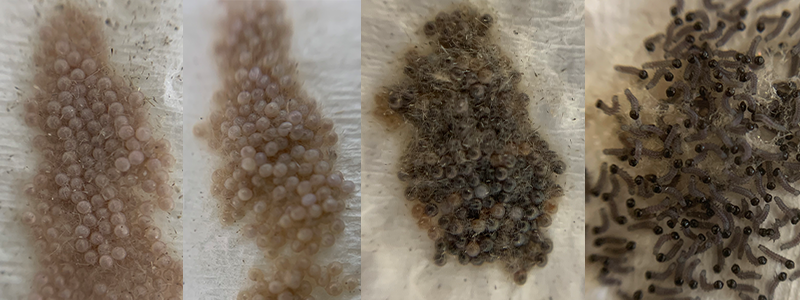
Development of larvae in eggs (left to right): newly laid eggs, head capsule just visible, dark head capsule very evident, neonate larvae hatching from eggs.
Newly hatched larvae are translucent with a dark head capsule. Small and medium larvae can be highly variant in colour (similar to helicoverpa), varying from light green to brown; they become darker with white lengthwise stripes and develop dark spots with spines as they grow. Older larvae have an inverted ‘Y’ shape on the head and a distinctive pattern of four large raised dark spots on the second to last body segment. Larvae can grow to up to 40mm long.

Fall armyworm characteristics include the inverted ‘Y’ on head capsule and four raised spots in a square at the rear
The 15mm long red-brown pupae are similar in appearance but slightly smaller than helicoverpa pupae and are found in soil adjacent to host plants.
Adult moths are about 16-17mm long, nocturnal, have a mottled brown or grey forewing, a white hind wing, and a wingspan of 32–40 mm. Male fall armyworms are more patterned and have a distinct white spot near the tip of each forewing.
- FAW male moth
- FAW female moth
Eggs hatch in 3–5 days, and development though 6 instar stages to pupation takes 2–3 weeks at northern summer temperatures. Development slows as the average daily temperature declines. Pupation takes another 2-3 weeks. Moths live for around 10 days, and a female can lay up to 1,000 eggs.
How can I tell it’s FAW?
It is important to not rely on a single characteristic when identifying larvae. Because there can be an overlap in characteristics between species, a correct identification is more likely when multiple points of identification are considered.
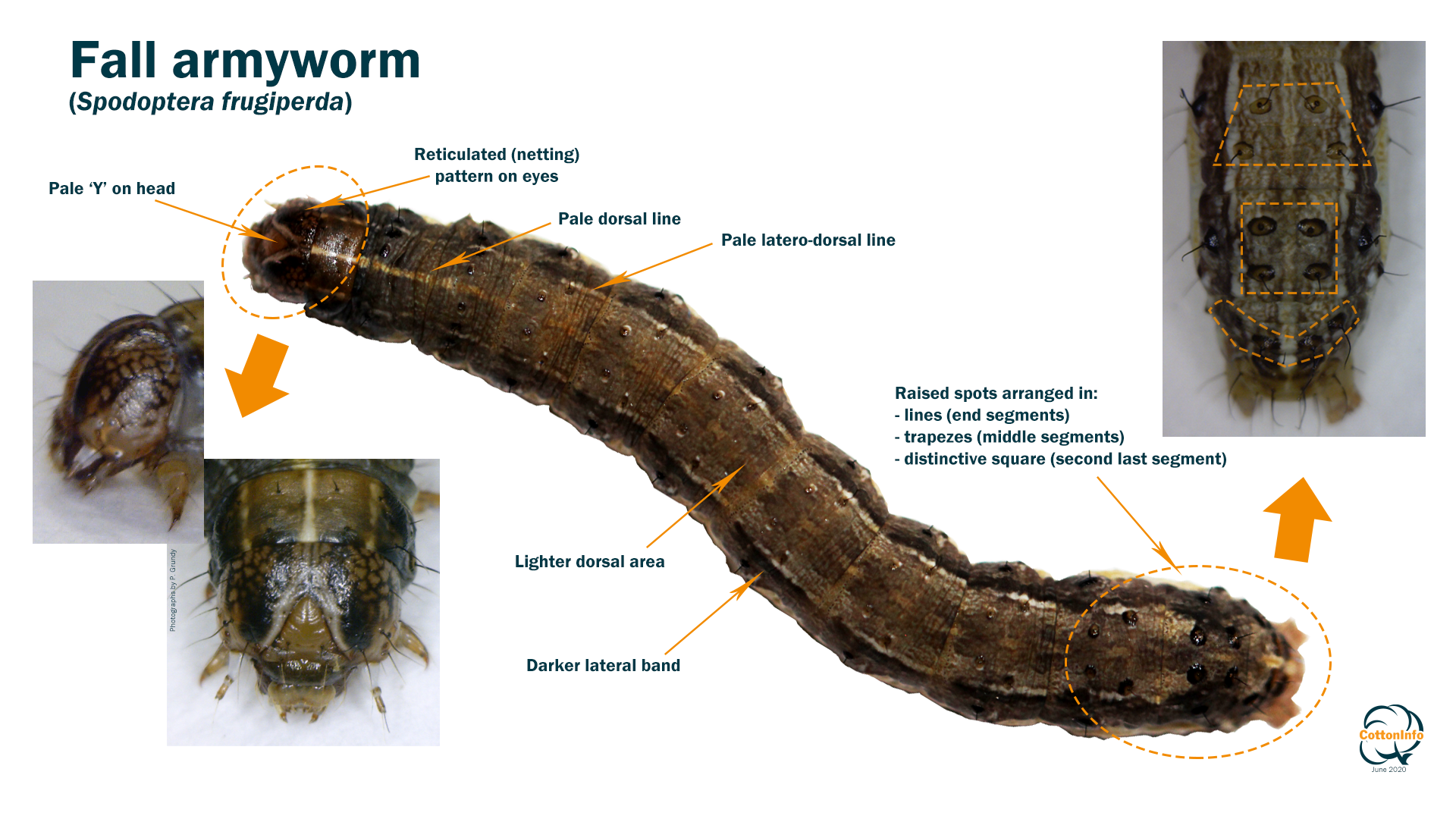
Some of the identification characteristics that may be found on a large larva. Click on the image to view a full-sized version of this guide.
FAW eggs look similar to those of other Spodoptera species, but newly hatched larvae will often ‘balloon’ (disperse on silken threads), unlike cluster caterpillar (Spodoptera litura), who tend to remain congregated near the hatched egg mass.
At a glance, FAW larvae look similar to other armyworm species and other caterpillars that grow to a similar size (3-4cm), such as helicoverpa and cutworms. Larger FAW larvae have both a pale ‘Y’ at the head end (that can be present in some other armyworm species) and a prominent set of four raised spots on their second last body segment. The spots can also be present in helicoverpa larvae, but become less prominent with age, and FAW have a more rounded body shape. Large FAW larvae start to resemble cutworm larvae with a greasy appearance.
- Fall armyworm
- Common armyworm
- Dayfeeding armyworm
- Helicoverpa
- Cutworm
- Cluster caterpillar
More information:
See also the page on FAW damage and the Beatsheet’s FAW image gallery.
Download NSW DPI’s FAW identification guide (2.5MB PDF) from their FAW page.
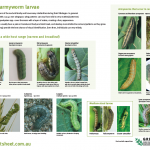 |
Download Identifying armyworm larvae (May 2020 – 4MB A3 pdf) |
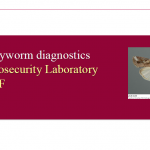 |
Download a Fall armyworm diagnostics presentation by Mark Schutze (DAF, Plant Biosecurity Laboratory) – 2MB pdf |
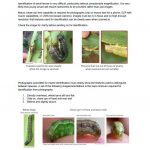 |
Where live insect collection is impractical, high quality photos, including close-ups are essential to provide the best chance of identifying the specimen. Download a Caterpillar identification: taking photos factsheet (600kB PDF). |
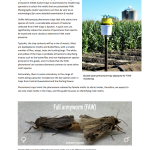 |
The FAW pheromone traps currently used have the potential to attract a range of insects.
|
 |
Once the larvae mature they drop to the ground to pupate. Watch a video on sampling for FAW pupae. |

